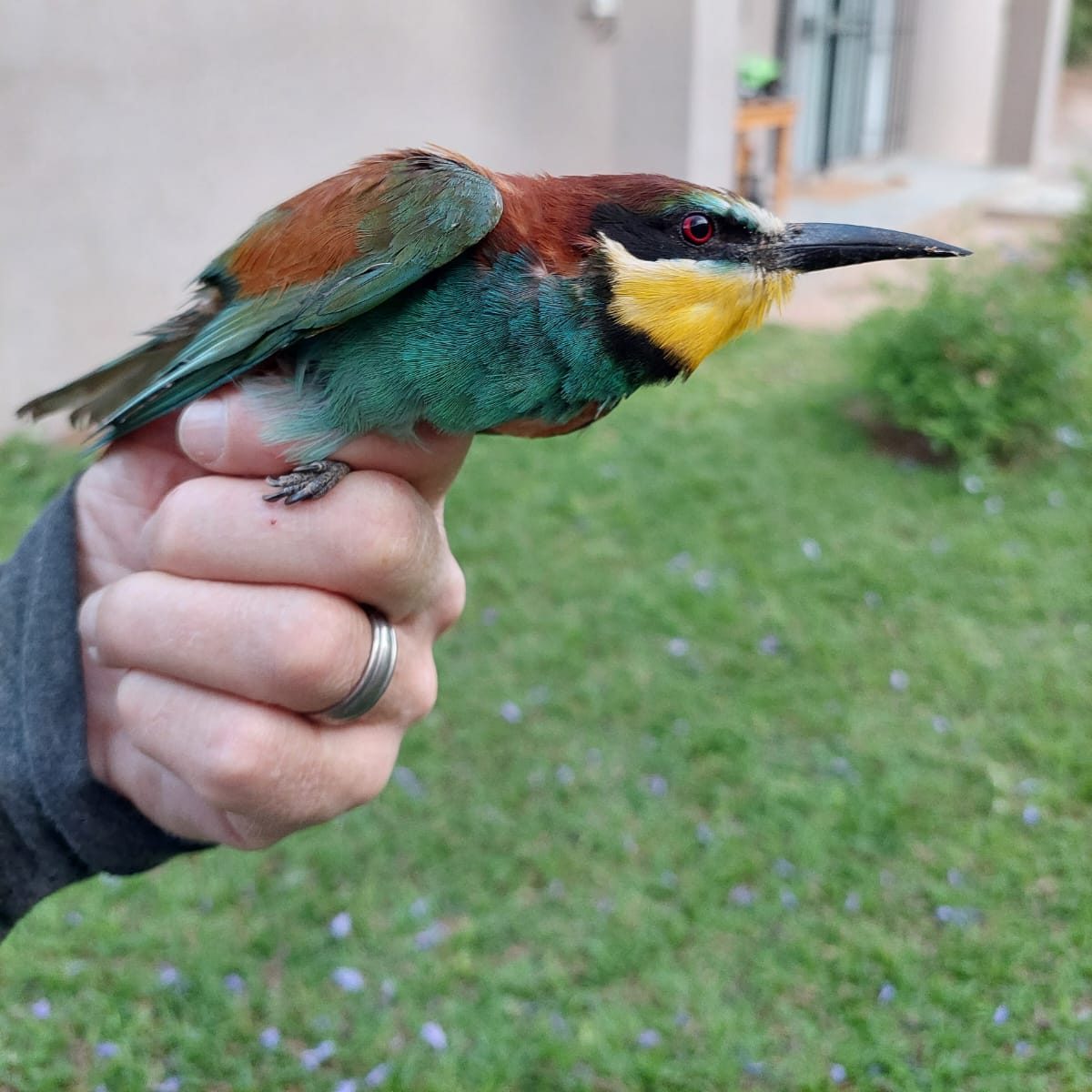Cover image: Fiery necked Nightjar Caprimulgus pectoralis
Karongwe Private Game Reserve, Hoedspruit, Limpopo Province
Photo by Douglas Cook
Botuin RAVE!
RAVE = RINGING, ATLASING AND VIRTUAL MUSEUMING EXPEDITION
The first four days of the BDI Rave were in November from the 27th to the 30th, at Botuin in Vanrhynsdorp. There is a report on this period here. The RAVE continues at other locations into December, until the 18th. Each report will have a link to the next period!

Our specific goals during a RAVE focus on ringing, atlasing and the Virtual Museum (VM). Through bird ringing, atlasing, and BioMAPping (for the Virtual Museum), we aim to:
- obtain annual survival estimates of key species via recaptures of ringed birds.
- build information on local movements of birds by systematically ringing at nearby sites.
- strengthen our understanding of moult.
- improve our knowledge of annual breeding success and the timing of breeding through a monitoring programme that estimates the percentage of juveniles in the populations at each site.
- develop guides that will help ringers and trainee ringers to age and sex birds.
On the first four days of the RAVE, Monday the 27th to Thursday the 30th of December, the ringers handled a total of 302 birds of 28 different species. The numbers of each species are in the table here:
| Species | Number ringed |
| Three-banded Plover | 1 |
| Laughing Dove | 19 |
| Namaqua Dove | 1 |
| White-backed Mousebird | 3 |
| Red-faced Mousebird | 4 |
| European Bee-eater | 1 |
| Southern Grey Tit | 2 |
| Red-eyed Bulbul | 2 |
| Familiar Chat | 2 |
| Cape Robin-chat | 3 |
| Karoo Scrub Robin | 5 |
| Lesser Swamp Warbler | 2 |
| Namaqua Warbler | 1 |
| Chestnut-vented Tit-babbler | 2 |
| Fiscal Flycatcher | 3 |
| Cape Wagtail | 1 |
| Southern Fiscal | 5 |
| Southern Double-collared Sunbird | 8 |
| House Sparrow | 7 |
| Cape Sparrow | 73 |
| Cape Weaver | 7 |
| Southern Masked Weaver | 10 |
| Red-billed Quelea | 2 |
| Southern Red Bishop | 67 |
| White-throated Canary | 2 |
| Lark-like Bunting | 61 |
| Cape White-eye | 7 |
| Southern Grey-headed Sparrow | 1 |
| Total for 28 species | 302 |
BDI-style Bird Species Texts
We are aiming to make it easier for beginner birders! Key to this is the production of “BDI-style” species texts on the BDI website. Each of the texts starts with an annotated photograph like this one for the Helmeted Guineafowl:

The BDI-style texts do not only focus on identification but provides all sorts of interesting information; to see the full text for this species, click here.
We added texts for five species during November 2023:

New Biodiversity Observations Papers in November 2023
Biodiversity Observations is an Open Access ejournal which focuses on the publication of descriptive papers which report observations relating to biodiversity. There is a summary of the activities of the journal for the period 2010-2022 here.
The graph below shows that Biodiversity Observations had its second best month ever for number of papers downloaded; 3069 downloads of papers were made. November didn’t quite manage to sneak ahead of October, which are 3173 downloads, 104 more.

One of the most recent papers takes a look at the increase in abundance of Chukar Partridges Alectoris chukar and Fiery-necked Nightjars Caprimulgus pectoralis on Robben Island.

The near complete removal of feral cats Felis catus was one of five major drivers of change at Robben Island in the first decades of the 21st century. This new paper in BO demonstrates that the abundance of Chukar Partridge and of Fiery-necked Nightjar has increased during this period. You can read and download the paper (for free) here.

The second paper published in Biodiversity Observations in November was entitled “Record of Progressive Greying in Laughing Dove Spilopelia senegalensis in Nigeria”. The website from which you download the paper is here. There is a plethora of terms which describe non-standard colour forms of birds. This paper helps unravel the complexity!
Bird Ringing
Bird ringing remains one of the most important research methods for discovering some of the most important basic information about each species. Conservation initiatives need a lot of information. Two key factors to understand are rates of survival and extent of movement. There is a discussion about the value of ringing here.

There are three ringing courses planned for 2024. They are:

